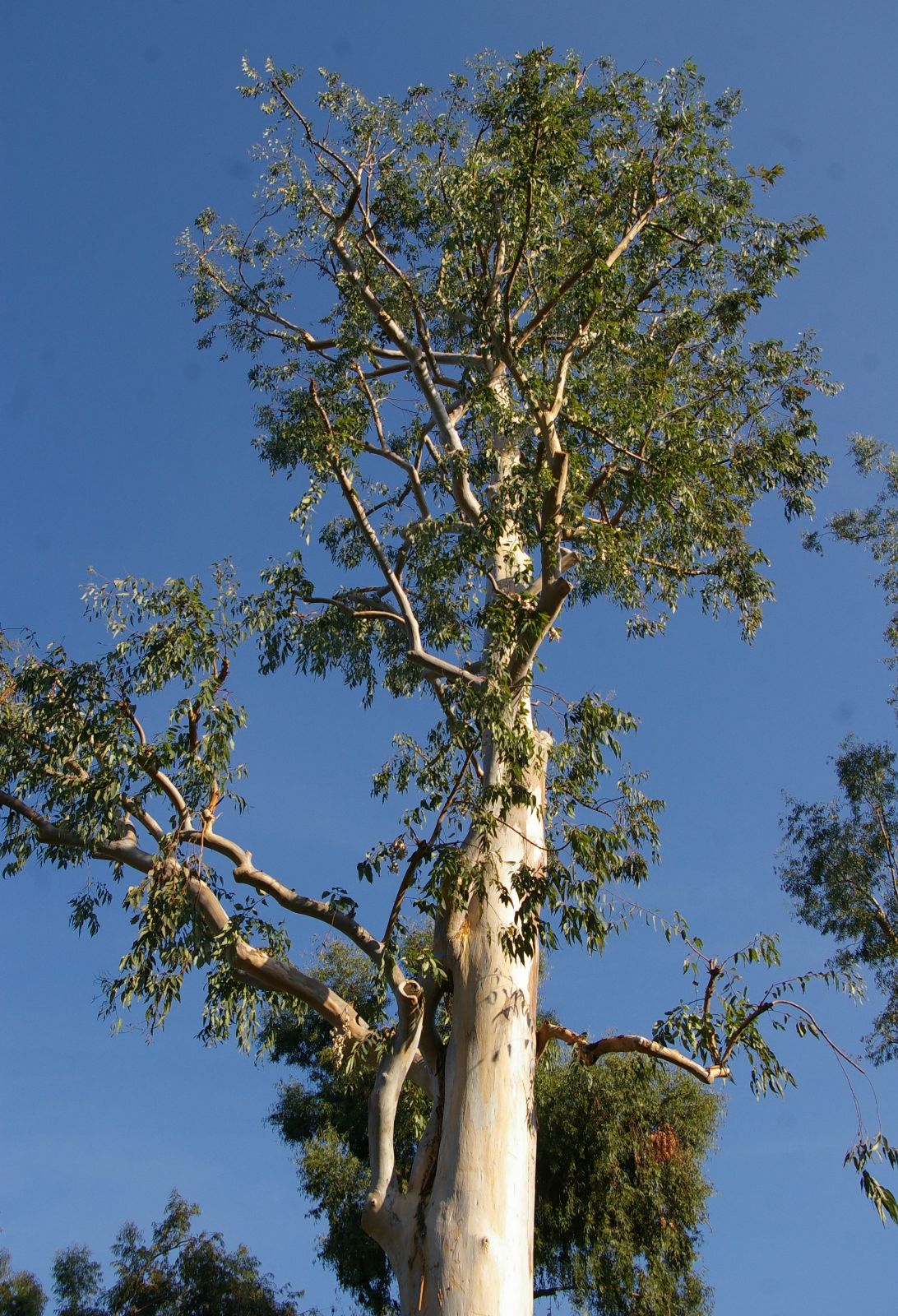Eucalyptus saligna
Credits
Article from New Trees by John Grimshaw & Ross Bayton
Recommended citation
'Eucalyptus saligna' from the website Trees and Shrubs Online (treesandshrubsonline.
Genus
Common Names
- Sydney Blue Gum
Other taxa in genus
- Eucalyptus acaciiformis
- Eucalyptus albida
- Eucalyptus amygdalina
- Eucalyptus archeri
- Eucalyptus blakelyi
- Eucalyptus bridgesiana
- Eucalyptus brookeriana
- Eucalyptus camaldulensis
- Eucalyptus camphora
- Eucalyptus chapmaniana
- Eucalyptus cinerea
- Eucalyptus coccifera
- Eucalyptus cordata
- Eucalyptus crenulata
- Eucalyptus cypellocarpa
- Eucalyptus dalrympleana
- Eucalyptus delegatensis
- Eucalyptus elliptica
- Eucalyptus fastigata
- Eucalyptus fraxinoides
- Eucalyptus globulus
- Eucalyptus gregsoniana
- Eucalyptus gunnii
- Eucalyptus johnstonii
- Eucalyptus kybeanensis
- Eucalyptus lacrimans
- Eucalyptus laophila
- Eucalyptus leucoxylon
- Eucalyptus macarthurii
- Eucalyptus macrorhyncha
- Eucalyptus mannifera
- Eucalyptus melliodora
- Eucalyptus mitchelliana
- Eucalyptus moorei
- Eucalyptus morrisbyi
- Eucalyptus neglecta
- Eucalyptus nicholii
- Eucalyptus nitens
- Eucalyptus nova-anglica
- Eucalyptus obliqua
- Eucalyptus oreades
- Eucalyptus ovata
- Eucalyptus parvula
- Eucalyptus pauciflora
- Eucalyptus praecox
- Eucalyptus radiata
- Eucalyptus regnans
- Eucalyptus remota
- Eucalyptus risdonii
- Eucalyptus rodwayi
- Eucalyptus rubida
- Eucalyptus sideroxylon
- Eucalyptus stellulata
- Eucalyptus subcrenulata
- Eucalyptus tenuiramis
- Eucalyptus urnigera
- Eucalyptus viminalis
Tree to 55 m, 1.2–1.5 m dbh. Bark white or blue-grey, smooth, but rough, greyish brown and flaky at the base and up the trunk to 4 m. Branchlets green. Juvenile leaves ovate to broad-lanceolate, glossy green, petiolate. Adult leaves glossy dark green, 9–25 × 2–3 cm, broad-lanceolate, lateral veins obscure, margins entire, apex falcate; petiole flattened or channelled, 1.5–2.5 cm long. Inflorescences axillary and solitary; umbellasters with 7–11 flowers. Flower buds fusiform or ovoid; hypanthium hemispherical, cylindrical or campanulate, 0.3–0.4 cm wide; stamens white or cream. Capsule cylindrical, campanulate or subpyriform, 0.4–0.7 cm diameter; valves three to four, exserted. Chippendale 1988, Hill 2004. Distribution AUSTRALIA: New South Wales, Queensland. Habitat Wet forest, often on slopes; primarily coastal. USDA Hardiness Zone (9–)10. Conservation status Not evaluated.
The Sydney Blue Gum offers only a slight chance of success in most of our area, being reliably killed by frost at around –5 ºC, so that it is suitable only for the very mildest locations. It does, however, grow very fast, putting on 10–12 m in four years in Oregon (S. Hogan, pers. comm. 2007), and while doing so is attractive, the new growth appearing red before turning a good glaucous blue. As the name suggests, Eucalyptus saligna has a distinctly willow-like appearance when young, but mature specimens are beautifully straight, and important for timber.

